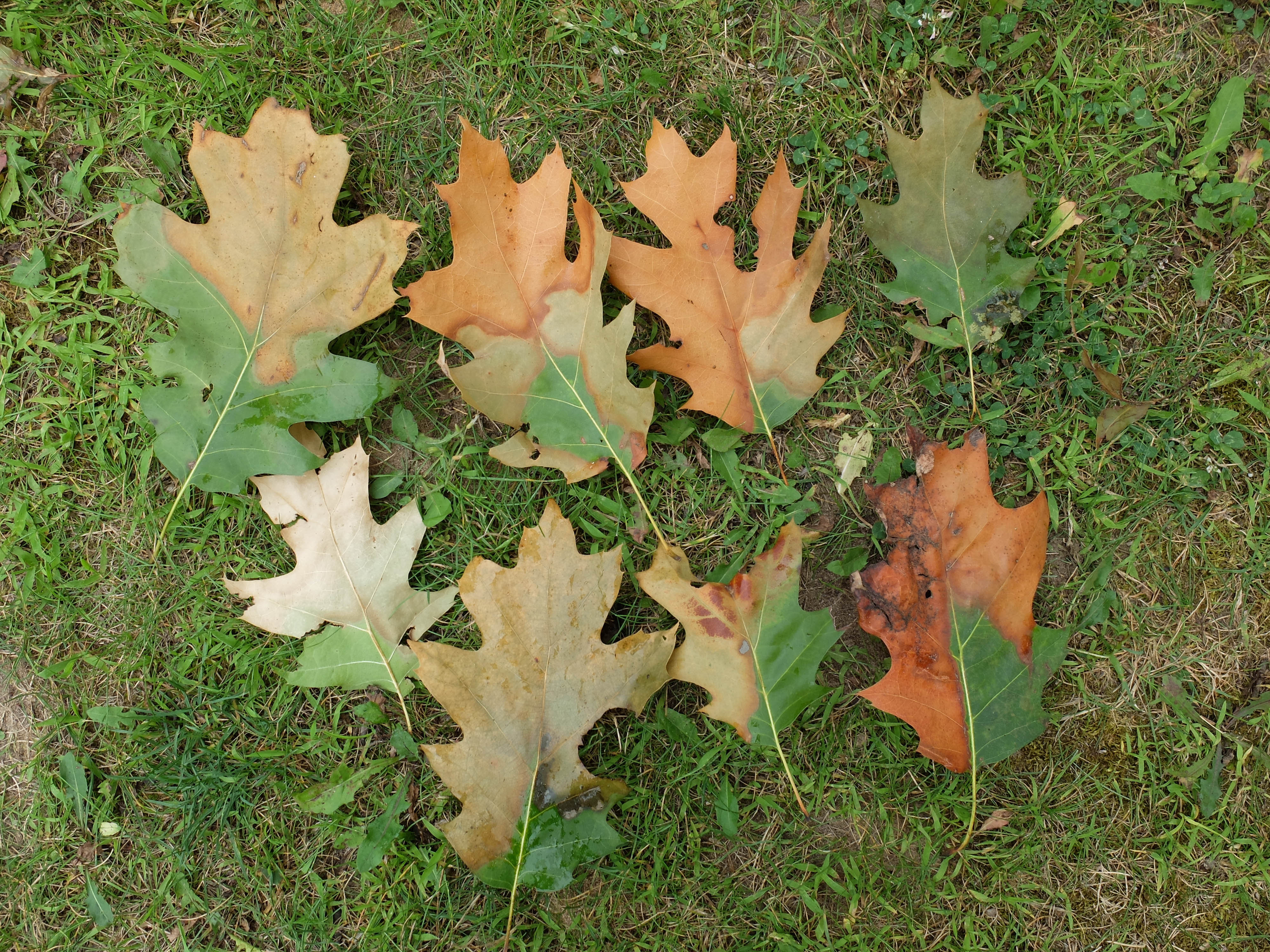We can all help prevent oak wilt
Knowing the safest time to prune oaks and understanding more about the disease is the best way to help prevent oak wilt.

Oak wilt continues to be a major problem across the state of Michigan, killing high numbers of red oak trees every year. This means it is important for all of us to understand what we can do to help prevent the disease. Learning how it is transmitted, recognizing signs of the disease, and knowing what we can do to effectively manage the disease will prevent the loss of many oak trees in Michigan.

The most effective way to prevent new infections is to avoid pruning oaks during the high-risk period for the disease. This period is from April 15-July 15, though many people choose to avoid pruning oak trees growing in the yard during the entire growing season. The best and safest time to prune is in the winter months when oak wilt risk is lowest. Even during the winter, professional arborists book their work many weeks out, and it is wise to schedule your tree work in the fall to ensure it can be completed before the high-risk period of early spring.

Understanding the two ways oak wilt is spread will make it easier to understand prevention strategies. Overland transmission occurs when small sap (nitidulid) beetles are attracted by the sap on tree wounds and pruning cuts. During the growing season, primarily spring and early summer, these same beetles feed on fresh mycelial mats, or the ‘fruiting bodies’ of the oak wilt fungus (Bretziella fagacearum) where they pick up spores on their bodies. These spores can be transferred to healthy oak wounds when the beetles visit fresh wounds or pruning cuts. Pruning between April 15 and July 15 should be strictly avoided because this is when beetle activity and viable spores are most prevalent across the landscape. If pruning an oak is absolutely necessary during this time, wounds should be immediately sealed with pruning sealer or water-based paint to prevent infection. In the winter, beetles are less active, and mycelial mats with viable spores are not common, so the risk of infection is low.
Oak wilt can also spread from tree to tree via roots that have grafted or grown together. Once an oak tree is infected, the infection can spread to nearby oaks via grafted roots. The most common and effective way to halt this kind of disease spread is to sever the root connections between infected and healthy oak trees. This is done by creating a deep trench with a vibratory plow, followed by removal of the infected trees. Sometimes a buffer of healthy oak trees will need to be removed as well. Protecting healthy oaks in the infected root-zone area can be achieved with fungicide injections of propiconazole to the root flares. Note that this will have to be repeated in 2 years and may not fully protect trees from above ground spread by beetles. Other methods of halting tree-to-tree infection are being explored for use when trenching is not possible. It is important to have a certified arborist trained in oak wilt management draw up a management plan before any tree removal is done. The Michigan Oak Wilt Coalition maintains a list of professionals who are trained in oak wilt management.

Oak wilt can also spread when logs or firewood from trees killed by oak wilt is moved into new areas. Always avoid moving firewood to new locations. The mycelial mats can still form on logs and firewood and attract sap beetles, continuing the disease cycle. To reduce this risk, dry and completely de-bark logs and firewood, as this will prevent the formation of new fungal mats. Or you may cover freshly cut oak wood with an intact tarp and bury the edges in the ground to ensure no access by sap beetles. The tarp should remain in place for at least a year until wood is dry and the bark becomes loose.
Be aware of the symptoms that oak wilt causes. Oak trees in the red oak group will show leaf wilt symptoms often starting at the top of the tree and progressing down through the branches. Rapid leaf loss will also occur; many homeowners report the necessity to rake the tan or greyish-green symptomatic leaves from their lawn in July or August. Trees die within weeks. Because several other pests and diseases can cause problems in oaks, it is important to confirm an oak wilt infection with a positive lab test prior to investing money in treatments. For information on how to collect a sample to test for oak wilt, read, “The Best Sampling Procedures for Accurate Oak Wilt Testing” by experts with Michigan State University Extension. If oak wilt is confirmed, consult a certified arborist with oak wilt management training. Again, please refer to The Michigan Oak Wilt Coalition directory of professionals experienced in the diagnosis and treatment.
Know the signs of oak wilt and the steps to prevent it. These steps include avoiding pruning activity on oaks during high-risk periods, managing disease outbreaks effectively, and not moving firewood to new areas. These actions will help protect oak trees and the countless benefits they provide to people, wildlife, and our communities. For more information on this disease, view an article from Michigan State University Extension.



 Print
Print Email
Email

